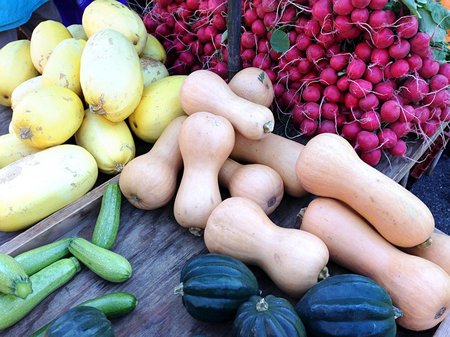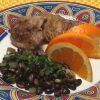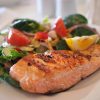The smell of food in the oven is almost as comforting as its taste. It doesn't have to be a cake or meat roasting. As the harvest season reaches its peak, roasting vegetables can be a satisfying, healthful way to fill your home with good aromas and create a hearty meal.
Roasting gives vegetables a richer, sweeter flavor. Combine a variety of whatever seasonal vegetables you find � corn, onions, peppers, Brussels sprouts, tomatoes, garlic, eggplant, zucchini and summer squash. You can also add root vegetables like potatoes, sweet potatoes, carrots, turnips and rutabagas.
Cut large vegetables into bite-size pieces, brush with a little olive oil and add herbs and spices. Dill goes well with tomatoes, potatoes and beets. Mint is nice with corn, zucchini and red bell pepper. Rosemary is a good complement to onions and mushrooms, as thyme is to eggplant, tomatoes, mushrooms, potatoes and summer squash.
Place the vegetables in a roasting pan that is large enough so they're not too crowded. Overcrowding steams vegetables and leaves them limp rather than tender. They should be basted occasionally, with broth or juice (orange or apple), and stirred gently.
Vegetables have varied cooking times, depending on their density and size. If roasting different types together, cut the denser ones in smaller sizes so that all vegetables become tender at the same time. Tomatoes, summer squash and eggplant need less time than corn, rutabaga, onions, bell peppers and winter squash. Parsnips, potatoes, carrots and some squashes and beets can take up to an hour or more.
Roasted vegetables can be more than a side dish. Mound roasted vegetables on top of a cooked grain like quinoa, millet, rice, couscous, bulgur, or in a chef's salad of leafy greens and strips of grilled fish or chicken.
Vegetables have a major place in the balanced, mostly plant-based diet recommended by the American Institute for Cancer Research (AICR) to protect against many types of cancer as well as other chronic diseases. This eating approach focuses on appropriate portions of a wide variety of vegetables, fruits, whole grains and beans.
The following recipe makes good use of autumn's bounty. Substitute freely, depending on what's fresh at the market.
Autumn Roasted Vegetables
Makes 4 servings.
- 3 carrots, peeled and cut into 1-inch pieces
- 9-10 pearl onions, peeled and trimmed
- 2 cups Brussels sprouts, halved if large
- 1 medium sweet potato, peeled and cut into 1-inch pieces
- 1 Tbsp. extra virgin olive oil
- 1/2 tsp. dried thyme
- Salt and freshly ground black pepper, to taste
- 1-1/2 cups fat-free, reduced-sodium chicken or vegetable broth
- 2 Tbsp. chopped pecans for garnish (optional)
- Preheat oven to 400 degrees.
- In a mixing bowl, toss the vegetables with oil, thyme, salt and pepper. Transfer vegetables to a roasting pan. Add broth to pan. Roast for 45 minutes, stirring and turning carefully every 10 to 15 minutes. Check frequently for tenderness.
- When vegetables are almost tender, turn oven up to 425 degrees and roast 10 to 15 minutes more, until vegetables are lightly browned and tender. Serve hot, garnished with pecans, if desired.
Per serving:
121 calories,
4 g. total fat (less than 1 g. saturated fat),
21 g. carbohydrate,
4 g. protein,
4 g. dietary fiber,
260 mg. sodium.
Diabetic Exchanges: 4 Vegetable, 1 Fat
AICR












